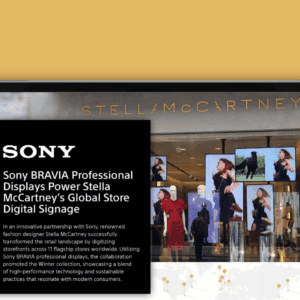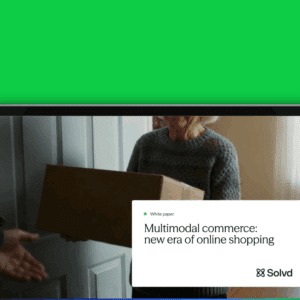By Matthew Goldman, Wallaby Financial

With Apple’s long-anticipated announcement of the Apple Watch, it is clear that the time for wearables is finally arriving. We have watches from all of the major hardware and software companies, plus Google Glass, and fitness trackers of every style. With the launch of Apple Pay, we also have the first major push to make these devices work for retailers.
What Wearables Do Today
Wearables today tend to do just a few things well. There is almost ubiquitous fitness management (heart rate monitors and pedometers). Most wearables with screens (watches) have notification systems that pair with a phone. Even some without screens, like the forthcoming Rebecca Minkoff bracelet will serve to notify users (in this case the bracelet will glow when you receive a notification from an important contact.).
Google Glass has a few retail products now, largely thanks to its app ecosystem. There are apps that utilize the camera to scan products, read reviews and even check prices. There is also a payment app using Bitcoin and QR codes. The installed base for Glass (and the issues with the device) mean that this is nothing more than an experimental area for wearables, though, and we are only at the very beginning.
Smart Watches Are Generation One Of Wearables For Retail
For better or worse, when you add a smart watch to your life, you become even more connected than you were walking around with your phone. According to Canalys, Pebble’s watch shipped 35% of all global wearable bands in Q1. The Pebble watch is one of the earliest entrants, one of the simplest and one of the most usable.
Pebble functions great as a watch, better as a notifier, and can be used for payments. An example of the retail extension is that you can easily and reliably display a barcode on the watch itself. Amongst other functions, this can be used to redeem value off of a Starbucks account or in place of a coupon.
There is a groundswell from users for this type of capability. There is no official Starbucks app for Pebble. It’s easy for a developer to understand how to turn your Starbucks card number into a barcode and display it on your smart watch, however. Is paying with your wrist instead of your phone (or instead of your card or cash) that much easier? It’s not. It is however, slightly easier, slightly faster and no less reliable. These types of evolutionary changes will start to drive retail transactions to wearables.
Where Wearables Will Shine In Retail
Helping to enable payments and mobile wallets seems like it will end up being table stakes for wearables. However, for a retailer, it’s not clear how that really helps. Initially, we expect wearables to slow down lines and be of a bit of harm in turnover, especially at high volume registers.
Where wearables will shine will be through enabling better in-store interactions. It’s long been a dream of retailers to be able to reach out and communicate with customers. From the humble motion-sensing display, up to dreams of NFC and BLE-enabled communications, retailers (and their vendors) have long been working on ways to create better in-store and in-aisle interactions.
Wearables will make this possible, although not in this first generation. Imagine tapping a wireless enabled product to your wrist to get a price check. Imagine receiving contextual notifications on your watch displaying offers, sales or opportunities in-store. Yes, we’ve heard this all before, but pulling out your phone is not the same as lining up a watch. With the advent of both BLE and NFC capabilities directly into wearables, the ability to scan products will be better than before.
What Retailers Can Do Today
Unfortunately, we’re years away from ubiquity of wearables. Retailers today can start to understand wearables and how to use them, though.
First, understand what notifications your customers want. Devices are personal and you don’t want to spam your customers. Via surveys, discussions and trial, you can start now to understand what your customers want to hear (savings opportunities, events) and what they don’t (long newsletters with no immediate value).
Second, learn about wearables and the apps that help retail. Trying out a wearable (Android, Gear, Pebble, or Apple) helps you understand how to use it and the mindset of the users. See what apps are available. There are payments tools, price comparisons and social tools.
Third, practice with real apps. My company has been developing for wearable platforms all year, knowing the user base is small, but also understanding that we can learn from the early adopters.
Matthew Goldman is the co-founder and CEO of Wallaby. Prior to founding Wallaby, Matthew served as Executive Director of Product Management for AT&T Interactive (YP.com), where he managed a $650 million advertising P&L. Prior to AT&T, Matthew was Director of Retail Strategy at Sequoia Capital-backed Green Dot Corporation, a leading provider of reloadable prepaid debit cards. He also has experience in strategy consulting, e-commerce and systems administration.






